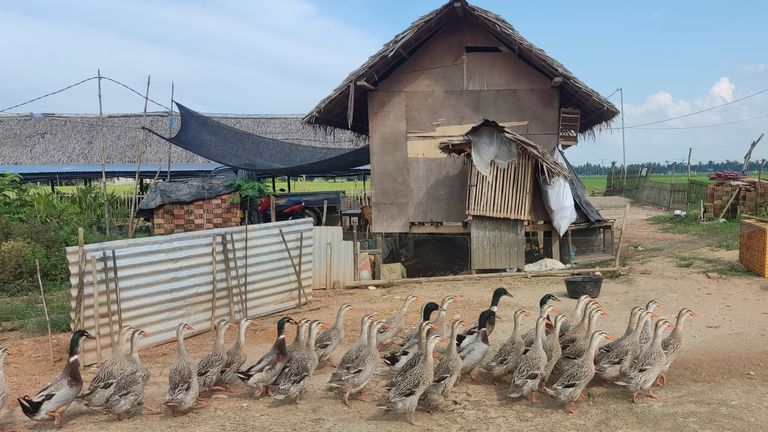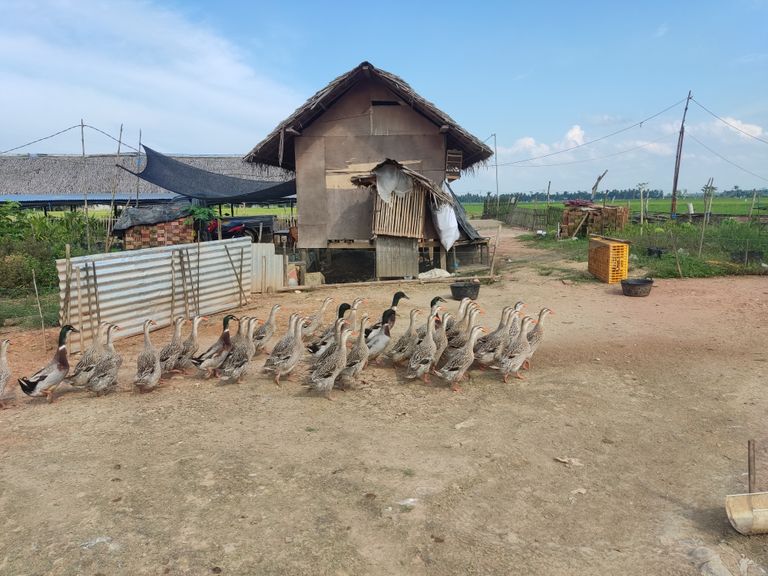The development of a food estate area, also known as a food barn in Central Kalimantan's swampland, is a program to increase national food production. This strategic program is of course very important to support food security in the midst of the COVID-19 pandemic which has a very broad impact. Many commodities are the target for the development of this food estate area. One of them is livestock commodities. Particularly for Central Kalimantan, where most of the land is in the form of swamps, the most suitable commodity is Alabio duck farming


Alabio ducks are ducks that originate from crosses between Kalimantan ducks and Peking ducks (broiler ducks). The name alabio is taken from a regional name in South Kalimantan, namely Alabio. Precisely located in North Hulu Sungai Regency, South Kalimantan. This name was given by drh. Saleh Puspo, a scientist who has done a lot of research on this duck. Alabio ducks have a characteristic that other ducks don't have, namely their slim body like a bottle. Adult body weight between 1.59-1.72 kg. Male Alabio ducks have brown fur with black or white spots on the top of the head, light gray brown on the back with a black tail that curves upwards, chest is brown and white-gray, wings are brown silver flickering bluish green. While female Alabio ducks usually have black and white feathers on the top, grayish brown on the back, chest and wings with a tail straight back. The color of the claws and beak is dark ivory yellow, while the color of the eggshell is bluish green.
Many advantages can be obtained from raising these ducks. Some of them are: 1) For independent populist economic businesses; 2) To obtain consumption duck eggs, meat, and also duck breeding; 3) The manure can be used as fertilizer for food crops/plant crops; 4) As a filler for retirement activities; and 5) To educate the life of the nation through meeting the nutritional needs of the community.
To do Alabio duck farming is not difficult. What must be known and fulfilled are several requirements and steps that support it. Among them: a) location selection; b) facilities and equipment; c) maintenance and enlargement; d) harvest and productive period; and e) pest and disease management.
LOCATION SELECTION. In choosing the location of the cage, what needs to be considered is: the location of the location is quite far from crowds or residential areas. In addition, it is easy to access and pass by means of transportation to and from the marketing location and the environmental conditions of the enclosure have a conducive climate for livestock production or productivity. Equally important, the location is not prone to eviction during several production periods.
FACILITIES AND EQUIPMENT. What needs to be considered are: 1) Selection of land, apart from being far from settlements so that the smell of livestock manure does not disturb the surrounding environment, the land also has a sufficient area; 2) Cage making. With a size of 4 m X 12 m = 48 m2, it can accommodate 400 alabio ducks laying eggs; 3) Provide sufficient feed space in the cage so that the ducks can freely enjoy the feed given; 4) Place for laying eggs, made of wood in the shape of a box and filled with rice dregs; 5) Duck seeds, can be obtained by ordering directly at the Alabio duck farm. The ratio of male and female ducks is 1: 10. Male ducks don't need a lot, because the eggs produced are only for consumption, not for breeding/hatching.
MAINTENANCE AND ENLARGEMENT. During the rearing period until the age of 6 months, Alabio ducks are only fed artificial feed/voer. At the age of under 6 months, feed must always be available at all times in the cage and must not be empty. After the puppies are more than 6 months old, replace the feed with bran mixed with sago in a 1:1 ratio.
Feeding is done 4 times a day, namely respectively: at 07.00; 11.00; 14.00 and 17.00. The amount of animal feed needed in a day for 100 ducks is 7 kg of rice bran and 7 kg of sago. At least once a week, the Alabio ducks are released from their cages, so they can eat grass which can increase the immune system of the Alabio ducks themselves.
HARVEST AND PRODUCTIVE PERIOD. Egg harvest is done every day. Every 100 on average produces ± 90 eggs per day. The productive period of Alabio ducks can be up to 3 years. Alabio ducks start laying eggs after they are 6 months old. The laying period for Alabio ducks is divided into 3 stages, namely: a) the first egg laying period is 9 months, followed by a non-productive period of 3 months; b) the second egg-laying period is 7 months, followed by a non-productive period of 3 months; c) the third egg laying period for 5 months, and after that the Alabio ducks are no longer productive.
So to anticipate that they are in profitable condition, the Alabio ducks which are no longer productive are fed with high intensity until they are fat, after they are fat they are sold, the proceeds from the sale are used to buy seeds (saplings) of Alabio ducks again.